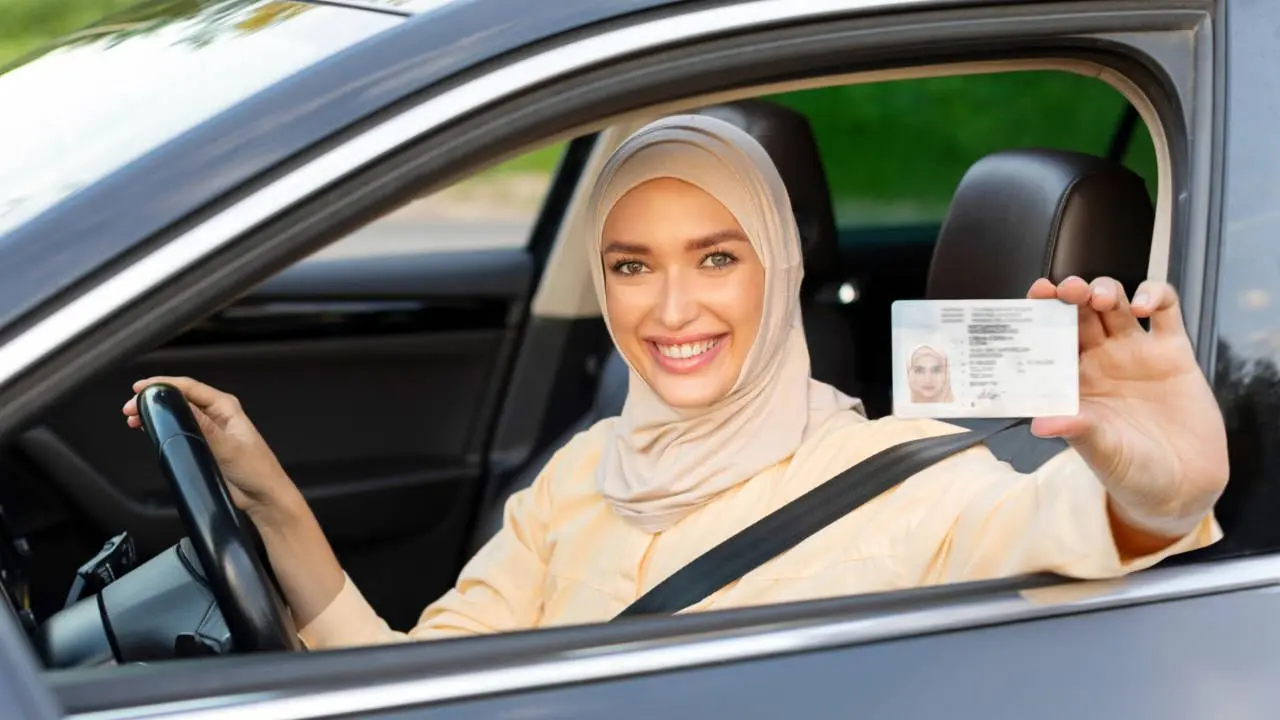Driving in Dubai: Your Ultimate Guide to Rules, Licenses & Safety

Key takeaways
To explore the cities of the UAE, nothing beats traveling by car. There is nothing quite like driving in Dubai. We think that by driving, you can get the best view of the city. The broad, modern highways and well-maintained road surfaces are quite thrilling. However, to navigate them safely, you must follow the local rules. This guide provides an overview of driving in Dubai, the necessary licenses, and other safety information you will need to drive safely.
Essential Dubai Driving Rules & Laws: What You MUST Know

Dubai’s traffic rules are quite effective in keeping the roads safe. Those who break these rules will face harsh punishment. We believe that knowledge is your best defense against costly mistakes. Familiarizing yourself with these essential road rules is the first and most important step to a confident drive.
Speed Limits: City, Highways, and School Zones
Driving rules in Dubai regarding speed must be adhered to, as many speed cameras are installed in Dubai. The limits vary depending on the type of road.
Here is a general overview of the speed limits:
| Road Type | Typical Speed Limit | Notes |
|---|---|---|
| Urban/City Roads | 60–80 km/h | Varies depending on the specific area and number of lanes. |
| Major Highways (e.g., E11) | 100–120 km/h | The highest speed limits are on the main highways that connect the various emirates. |
| School Zones & Service Roads | 40 km/h or less | Speeds are significantly decreased in heavily trafficked areas, such as around schools during hours of operation. |
Dubai has a feature in its system called a ‘buffer’ or tolerance on its speed cameras. It is mostly set at 20 km/h above the posted speed limit sign Dubai. For instance, radar usually captures a speed of 121 km/h when the limit on the road is 100 km/h. However, always stick to the posted speed limit.
Seat Belts, Mobile Phones, and Other Key Laws
There are many other laws in addition to speed limits:
- Every passenger in the vehicle must wear a seat belt while driving, whether seated in the front or back.
- When driving, no person shall hold or use a mobile phone for any purpose (including texting, talking, or browsing) unless it is connected to a hands-free set.
- It is prohibited to drink and drive in Dubai. Even a tiny amount of alcohol can get you in trouble.
- For child safety, kids under 4 must be restrained in a suitable child safety seat.
If a driver does not comply with these rules, he/she will be liable for heavy fines and black points on their license.
Understanding Dubai's Road Sign System
The uae driving signs are very clear and are based on international standards, with information displayed in both Arabic and English. They are color-coded for easy identification:
- Blue signs give instructions that everyone must obey. They show you the way, which lanes to take, and where to exit.
- A red circle means "no." These show "No Entry," "No U-Turn," speed limits, and more.
- Red triangle signs are warning signs alerting a driver to something up ahead, such as pedestrian crossings, roundabouts, or sharp bends.
Pay heed to the road signs while driving on the road.
Lane Discipline and Overtaking Rules
Lane discipline is essential on the multi-lane roads in Dubai:
- Try to remain in the right-hand lane unless you are overtaking anyone.
- The fast lane (leftmost lane) should only be used when passing another vehicle or traveling at the speed limit. Driving slowly in this lane is a violation.
- Overtaking can only happen on the left. Overtaking from the right is a grave and unsafe act.
- Use your indicator before changing lanes or turning to avoid accidents.
Maintaining lane discipline smoothens the flow of traffic.
Driving Licenses in Dubai: For Tourists and Residents

The requirements for a driving license in Dubai differ for tourists and those who hold a UAE residence visa.
Can I Drive with My Foreign License?
If you are a tourist, you can drive a rental car with a valid driving license from an eligible country. The list of approved countries is extensive and includes:
- Europe: UK, Germany, France, Italy, Spain, Switzerland, Netherlands, etc.
- North America: USA, Canada.
- Asia-Pacific: Australia, New Zealand, Japan, South Korea, Singapore, Hong Kong.
- GCC Nations: Saudi Arabia, Oman, Qatar, Bahrain, Kuwait.
If your license is not from a county mentioned, you will need an international driving license Dubai for tourists.
How to Get an International Driving Permit (IDP)
Get an International Driving Permit, which is a translation of your driving license, before traveling to Dubai from your country. You cannot apply for it once you are inside the UAE. When you pick up the car, you must show your original valid driving license.
How to Apply for a UAE Driving License (Exchange & Full Process)
For residents, a UAE driving Dubai international license is mandatory. There are two main paths:
- License Exchange: If you are a resident holding a license from one of the above-mentioned countries, you can normally exchange it for a UAE license through a simple administrative process at the RTA, without the need to take driving lessons or tests.
- Full Process: If your driving license is not from an eligible country, you need to register with a licensed driving school in Dubai. To get a UAE driver’s license, you must complete a prescribed number of lessons and pass both a theory and a practical driving test. Driving without a license in Dubai for residents is prohibited.
Safety First: Tips for Safe Driving in Dubai's Conditions

Despite its great infrastructure, driving in Dubai is pretty safe, but there are local conditions you should know.
Maintaining a Safe Following Distance
It is important for UAE drivers to keep a safe distance between cars in uae. We advise following the “three-second rule,” especially in Dubai because:
- Sudden Braking: Traffic often slows down suddenly on busy roads.
- Sand on Roads: On a windy day, sand can blow onto roads, reducing tire grip and increasing braking distance.
- High Speeds: Due to high speeds on Dubai's roads, it requires extra space to react and stop safely.
Following too closely can result in an accident, which is a punishable offense.
Dealing with Tailgating and Flashing Headlights
You might experience drivers who will tailgate (drive too close to your rear bumper) and flash their headlights, especially in the fast lane. This is their signal for you to move over. The best response is a calm one, not an aggressive one. Don’t brake-check the other driver.
- When it is safe to do so, signal your intention and move to a lane on your right so that a faster vehicle may pass you safely.
- Stay out of the far-left lane unless you are driving at the maximum speed.
Navigating Roundabouts and Complex Junctions
Dubai has several large, multi-lane roundabouts and complicated junctions. Key roundabout rules to remember are:
- Give Way: Always let the vehicles that are already inside the roundabout (coming from your left) go ahead.
- Stay in the Correct Lane: Get into the correct lane when entering based on your exit. Drivers should use the left lane to go straight or left and use the right lane to turn right.
- Signal Your Exit: Indicate where you are going to be a safe driver.
Use patience and clear signaling to take junctions safely.
Penalties and Fines: Avoid Costly Mistakes

Dubai has laid out proper traffic rules which include fines, black points, and sometimes even vehicle towing. The traffic fines are substantial, so it is vital to drive responsibly.
Major Traffic Offenses and Their Consequences
Here are a few of the most serious offenses and their usual punishment.
| Offense | Fine (AED) | Black Points | Other Penalties (Potential) |
|---|---|---|---|
| Driving Under the Influence | Decided by Court | 23 | Vehicle Impoundment, Jail Time |
| Exceeding Speed Limit by > 80 km/h | 3,000 | 23 | 60-day Vehicle Impoundment |
| Running a Red Light | 1,000 | 12 | 30-day Vehicle Impoundment |
| Driving Without a Valid License | 5,000+ (Court Decision) | - | Jail Time |
| Using a Mobile Phone While Driving | 800 | 4 | - |
| Failure to Wear a Seat Belt | 400 | 4 | - |
If you don’t want to get punished, you must drive safely and legally.

How to Check and Pay Traffic Fines Online
Often, rental companies will reach out to you if you receive a fine while driving one of their rentals. However, you can also check for fines yourself:
- Check the official websites of the Dubai Police or the RTA (Roads and Transport Authority).
- Find the fine with the help of the portal by entering your vehicle plate number or driving license number.
- The system will display any fines you owe. After this, you can easily make a secure online payment with your credit card.
FAQ
Which Side of the Road Do You Drive On in Dubai?
In Dubai, people usually drive on the Dubai driving side, which is the right side of the road, and the steering wheel is on the left. This is the same as in the USA and most of Europe.
What is the Legal Driving Age in the UAE?
The legal driving age in Dubai to get a license is 18 years old. Most companies allow a driver of 21 years to rent a car; however, our company requires the driver to be 25 years old for high-performance vehicles.
Can Women Drive in Dubai?
Yes, absolutely. In Dubai and the UAE, women have the same rights as men to drive. In the interest of safety, there are “ladies’ taxis” with women drivers in the city.
Recent Articles
- Best Afternoon Tea in Dubai
- Quranic Park Dubai: A Visitor’s Guide to Faith and Nature
- Dubai Shopping Festival 2025-2026
- Top Luxury Rental Car Services in Dubai in 2025-26
- Top 10 Luxury Cars to Rent in Dubai 2025-26: Prices, Reviews & Booking
- UAE Driving License Guide: Using Foreign Licenses in UAE & Abroad
- How to Pass Your RTA Road Test in Dubai: Ultimate Guide & Tips

